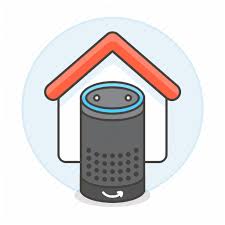E-mojis [Japanese e (picture) + moji (character)]are entering into our daily written conversation. They are almost becoming another language. My article on this subject was published in South Asia Monitor on 6 September 2019.
A Fad or New (Internet) Linguistics?
Emojis first elicited my interest when former Australian Foreign Minister, emoji savant Julie Bishop, created a minor diplomatic storm by responding to an interviewer’s question of what she thought of Russian President Putin. She selected the angry, red faced
Instinctively, I have disliked emojis. Two reasons. One, they violate the Socratic dictum that the “beginning of wisdom is the word”. Secondly, it has always seemed to me that playing with childish pictures within adult communications is really, well, childish.
But I am changing my views.
My workshops on Cultural Intelligence (CQ) address the prevalence and value of gestures (including facial expressions) in various cultures. For example, reserved Anglo-Saxons from the west or the inscrutables from Sinosphere find it highly distracting to see their Indian opposites gesturing copiously during ‘serious’ business meetings.
Or during interviews. Long ago, fresh from Indian mores, I discovered that Australian interviewers were more fascinated by my gestures than with my responses. Now, I advise my clients from certain cultures to select chairs with arm-rests to hold at formal gatherings to minimize involuntary gestures.
Of course, gesturing is not limited to Indians only. One indelible impression professional (and private) visitors to Italy, Greece and Latino countries carry is of local proclivity for it, almost as if a choir of gestures is essential to understand what they are saying.
Several studies agree that whatever the civilisational antecedents, gestures have an important role to play in interpersonal – communications in all societies. (As do shades and tones of voice.) They add ‘moving pictures’ to content, intent and nature of what is being said: head movements, crossed or flailing arms, tapping fingers, stroking beards, hand postures to signify thinking, sizes, or whatever.
But, now, digitized communications are becoming ubiquitous. They are increasingly replacing voice and visual inter-personal communications. There is overwhelming empirical evidence that despite the popularity of emails and social networks, text messaging is by far the most common activity on mobile phones, outstripping the number of phone calls made (and eclipsing the very objective of phones in the first place!).
Consistent with human endeavor from eons ago to communicate effectively face-to-face, the emerging problem is how to give that personal touch to our digitized communications – as gestures and expressions help us do.
Emojis are budding as one substitute. If used in appropriate context in digital interactions, they add nuances (and brevity) to what we are texting. The expanding keyboard of emojis is ‘imaging’ an increasing number of human emotions
One liberating aspect of emojis is the release from pedantic grammar, which might partly explain their exponentially growing use. After all, there is no need to focus on sentence structure and parts of speech. They rely entirely on the context of the digital exchange.
Arguably, emojis are also adding to economic productivity as services increasingly become part and parcel of our daily life. They are developing into an invaluable tool for service providers for enhancing their products: From feedback on the quality of a public toilet to an immediate, in-class student response to a lesson (replacing the need to scan students’ body language to assess its effectiveness)
Of course, it is early days for emojis. The current palette of 3019 units can hardly match the vast range of gestures and facial expressions used by humans. But their vocabulary is growing. Earlier this year, the Unicode Consortium (approving authority), added another 230, including skin tone options, Hindu temple, sari, disablements, etc.
Significantly, sprouting studies and anecdotal evidence are throwing up interesting, psychological insights into emoji practitioners’ persona.
Generally, regular users tend to be socially agreeable and empathetic. Friendlier than expected emojis among colleagues can change inter-personal perceptions and contribute to improved collegial atmosphere at the workplace. Women are leading the way in emoji use, seemingly consistent with their traditional role as drivers of language evolution. Texters, self-aware of how they come across to others, are inclined to avoid negative depictions. There are apparent correlations between (stereotyped) cultural preferences and above-average use of some emoji themes (French, heart/love; Arabs, green plants/flowers; Australians, fun/alcohol).
There is little doubt that “The Emoji Code”, conveying complex non-verbal messages in one click, will become more and more relevant to effective human intercommunications – and inevitably morph into a new branch of linguistics in the Internet of Everything.
Rakesh Ahuja, CQ Consultant; Founder: www.DownloadingMyMind.com
PS: Check emoji meanings in Emojipedia etc. before use. For example, among emoji aficionados,

















